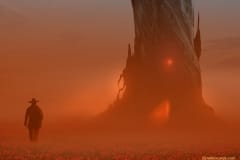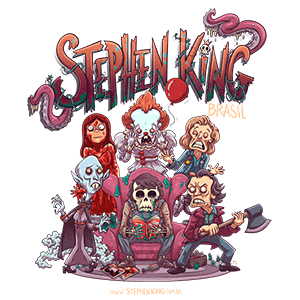James Cole
He is the man behind The Last Rung On The Ladder Dollar Baby Film.
SKSM: Could you start with telling me a bit about yourself? Who are you and what do you do?
James Cole: Who am I? Hmmm. Well, I’m just a guy who grew up loving movies. And so for the past fourteen years I’ve lived in Los Angeles pursuing a career writing for film and television. I actually wrote stories when I was very young and I made my first short Super-8 film when I was in fifth grade. It was a combination of live action and animation and took an entire school year to shoot and edit, and it even got shown as part of the school district’s film festival. So at eleven years old I sat with an audience of my peers and experienced the joy of applause and laughter in all the right places, and from that day forward I was hooked. I’ve been making films and writing ever since.
SKSM: When did you make The Last Rung on the Ladder? Can you tell me a little about the production? How much did it cost? How long did it take to film it?
James Cole: “The Last Rung on the Ladder” was film almost 19 years ago (gasp!). It was shot on Super-8 in the summer of 1986 on Cape Cod, co-directed with my friend Dan Thron. We were all young and pretty inexperienced – I was twenty and Dan was only fifteen, and our leads, Adam and Melisa, were thirteen and eleven. Dan and I had loved the short story and we were crazy enough to think we might be able to film it, despite having no crew and almost no budget. Our equipment was literally nothing more than two sound Super-8 cameras and two hand-held lights. And yet somehow we pulled it off. We shot for about ten days (spread out during the summer) and then it took me almost another year to complete the editing and post production. But it was an amazing experience and the kids were great.
I think what makes me most proud of the final film is how good it is despite our lack of budget and equipment. (The final budget was somewhere between $1,500 and $2,000.) Sure, it’s rough in places and there are things I always will wish I could have done better, but some of the solutions we came up with were ingenious. For instance, there’s the shot at the end of the childhood sequence (the bulk of the movie) when Larry leaves the bedroom with his father and Kitty gives him a look of sympathy (because he’s gonna get punished for letting Kitty get hurt). Well, I knew I wanted to freeze the shot, then to fade out so we could segue back into the present (wraparound) sequence with older Larry, but how to do it? Freeze frames and dissolves are all done in post production with an optical printer (or today, with computers and digital effects), but all I had as the editor was the raw footage of Kitty’s face, which certainly did not “freeze” on cue. So I actually had to “film the film.” I ran the footage through the projector, which was projected onto a wall, and I aimed the Super-8 camera at the image and filmed it all over again. Except, as I filmed, I stopped the projector, freezing the frame at the right moment, then turned down the exposure meter on the camera very…slowly… It wasn’t perfect – even in the final film you can see the brightness of the shot flicker and dim when the frame freezes, but still, I got the shot, even if it was in the most primitive way imaginable.
SKSM: How come you picked The Last Rung on the Ladder to develop into a movie? What is it in the story that you like so much?
James Cole: It was a very emotional story. Dan and I both loved Stephen King, even though in 1986 I hadn’t read all of King’s books (that he’d written up to that point). But “Night Shift” was one of the first books I did read, and I remember being so surprised when I started reading “Last Rung.” It wasn’t a horror story – unless you consider the true life horrors the story depicts (e.g. suicide, loneliness, the way Larry and Kitty’s relationship falls apart as they grow up). But it wasn’t “Monster Horror” in the sense that “Children of the Corn” (the story that immediately precedes it) is. It was just a small story of a brother and sister, and the sense of time and place was so strong – the farm, the barn, the era, that I could just see it as a movie. Most of all, the tragic ending just broke me up. It is one of the saddest stories King has ever written.
So Dan and I loved the story, but what made us consider it was when we “found” our first lead. Adam Houhoulis was in junior high at the time I was a senior, but I went to such a small school that the junior high kids weren’t separate from the high school and Adam and Dan and I all were friends. And Dan and I realized how “right” Adam was for the part of Larry, and then, when I remembered one of my other friends had a little sister who was also perfect as Kitty, we had our cast. That, more than anything, pushed us into making the movie – forget the other logistics like budget and technical problems, let alone finding an actual barn we could use!
SKSM: How did you find out that King sold the movie rights to some of his stories for just $1? Was it just a wild guess or did you know it before you sent him the check?
James Cole: I knew about the “Dollar Deal” through some of my King contacts, but I really don’t remember how I found out specifically or who told me. I just knew that I didn’t own the rights, didn’t even have an option, but figured such a small production wouldn’t bother him as long as I sent him the check for a dollar and the film, once it was finished. Most importantly, we never had any intention of trying to sell or exhibit the film without his permission. We just wanted to be able to make it and hope, in the end, that he might like it.
And by the way, King doesn’t sell the movie rights for $1. Movie rights, even or his short stories, can cost thousands of dollars. The dollar payment allows the filmmaker in question a one time deal to make the movie, so long as the rights and legal stuff is retained by King. That way he still basically “owns” the story, even if a film has been made.
SKSM: Was there any funny or special moment when you made the movie that you would like to tell me about?
James Cole: Though it was so long ago, I do remember most of the filming pretty well. There weren’t any outrageous moments, and even the funny stuff (some of which we got on film and exists on a “blooper reel”) are too “inside” to be understood by any viewers. Most of it involved horseplay on the set and the kids being kids, rather than blown lines or mistakes. But it was a happy time.
The most detailed recollection of the production of “Last Rung” was previously published in “Castle Rock: The Stephen King Newsletter” in September, 1988. Of course the newsletter ceased publication the following year and I’m sure back issues are hard to find, but it was a great resource.
SKSM: How does it feel that all the King fans out there can’t see your movie? Do you think that will change in the future? Maybe a video release would be possible?
James Cole: I’ve always wanted King fans to be able to see “Last Rung,” but I knew going into the project that it was not likely. It was more important to make it just to prove Dan and I COULD make it. Just to have a completed film for my portfolio, something of which I could be proud, is what mattered the most. Still, I’d like to think a video/DVD release would be possible. The fact that the first ever “Dollar Babies Film Festival” was shown at the University of Maine last September means there certainly is an interest. It was amazing seeing such a variety of King stories on screen; different genres and film formats and of course budgets. “Last Rung” was clearly the lowest budgeted of the films in question, but I think it looked great and was well received nevertheless.
SKSM: Did you have any personal contact with King during the making of the movie? Has he seen it (and if so, what did he think about it)?
James Cole: No. I’ve never spoken or received any correspondence from King, though I’ve written him from time to time over these last almost twenty years. I know he received the video we sent in late 1987, and almost a decade later I got the sense that he probably did see the film, because he mentioned it in his introduction to Frank Darabont’s “Shawshank Redemption: The Shooting Script” book. King listed the film as one that had been adapted from “Night Shift.” The fact that King even listed it makes me assume he’s seen it, and at least found it watch-able.
SKSM: Do you have any plans for making more movies based on Stephen King’s stories? If you could pick – at least – one story to shoot, which one would it be and why?
James Cole: I have no plans to adapt any other King works until I’m established in the film business – something that I hope to happen soon. Without a feature film or television credit, you really have no clout, no position from which to bargain. But once I’m a paid and working writer, I think that will change. And when the time comes, there are definitely other King stories I would love to adapt. Two that come to mind are, “One for the Road” and “Grey Matter“, both from “Night Shift.”
SKSM: Thanks for taking the time to answer my questions. Is there anything else you want to say to the fans that read this interview?
James Cole: Just thanks, to both you and the fans. You have made it possible for “Last Rung” to be seen, and to those fans who have watched it, just know that I’m proud of the film…and I did the best I could with very limited resources!
Jim

















